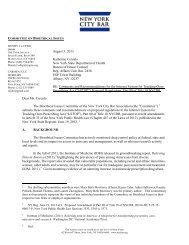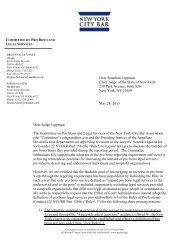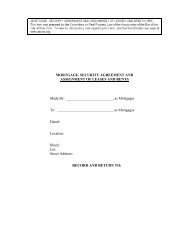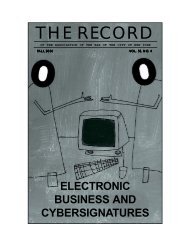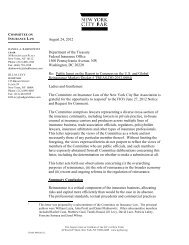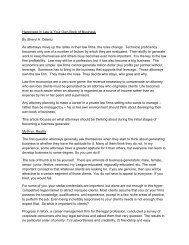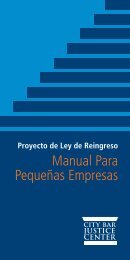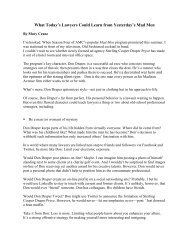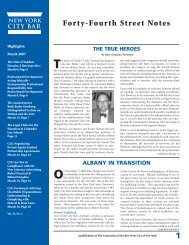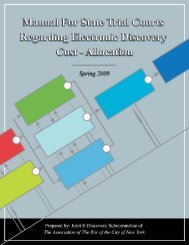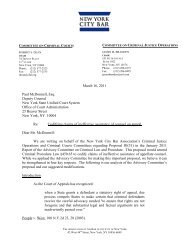2007 Issue 1 - New York City Bar Association
2007 Issue 1 - New York City Bar Association
2007 Issue 1 - New York City Bar Association
You also want an ePaper? Increase the reach of your titles
YUMPU automatically turns print PDFs into web optimized ePapers that Google loves.
W E B S I T E A C C E S S I B I L I T Y F O R P E O P L E W I T H D I S A B I L I T I E S<br />
<strong>Association</strong>, like the members of society at large, whether with statutorily<br />
defined disabilities or not, have vision, hearing, motor and other impairments<br />
that require accommodation to enable them to participate in the<br />
age of technology. For instance, those with vision impairments or dyslexia<br />
know the difficulties of accessing websites with poor color contrast,<br />
tiny or ornate print, or without features necessary to use audible screen<br />
reading technology; those with hearing impairments know the frustration<br />
of trying to navigate a website that relies on audible cues and lacks<br />
accompanying textual cues; and those with limited manual dexterity know<br />
the hardship of trying to access computer functions designed to require<br />
more dexterity than these individuals possess. All of them know the isolation<br />
and discrimination of being unable to access factual and legal research<br />
tools, discounted on-line purchasing, and a myriad of other features<br />
available to their colleagues without disabilities—features that could<br />
be available to them, too, with appropriate website design.<br />
2. Introduction and Summary<br />
The Americans with Disabilities Act (ADA), passed in 1990, provides,<br />
among other things, that “public accommodations,” such as stores, museums<br />
and travel services, may not discriminate against people with disabilities.<br />
The World Wide Web, created in 1989, came into wide public use<br />
about 1995. In 1997 the U.S. Supreme Court described the Web as “both a<br />
vast library including millions of readily available and indexed publications<br />
and a sprawling mall offering goods and services. From the publishers’<br />
point of view, it constitutes a vast platform from which to address<br />
and hear from a world-wide audience of millions of readers, viewers, researchers,<br />
and buyers.” 1<br />
Many businesses with walk-in offices or stores have moved all or part<br />
of their transactions to the Web. As the Department of Justice has noted,<br />
there is “a wide, and growing, range of services provided over the<br />
[I]nternet—from shopping to online banking and brokerage services to<br />
university degree courses—[that] are beginning to replace reliance on physical<br />
business locations.” 2 Some businesses encourage Web-only transactions,<br />
1. Reno v. ACLU, 521 U.S. 844, 853 (1997).<br />
2. Hooks v. OKBridge, Inc., No. 99-50891, at 9 (5 th Cir. 2000) (Brief of the United States as<br />
amicus curiae in support of Appellant, June 30, 2000) (“Hooks brief”), at www.usdoj.gov/crt/<br />
app/briefs_disright.htm. (challenging alleged discrimination by a Website that conducted<br />
online bridge tournaments). Hooks v. OKBridge, Inc., No. 99-214 (W.D. Tex. Aug 4, 1999),<br />
aff’d without opinion, 232 F.3d 208 (5 th Cir. 2000) (holding that Title III does not apply to a<br />
Website because of lack of physical space (but see infra, Part 4)).<br />
2 0 0 7 V O L. 6 2 , N O. 1<br />
119



